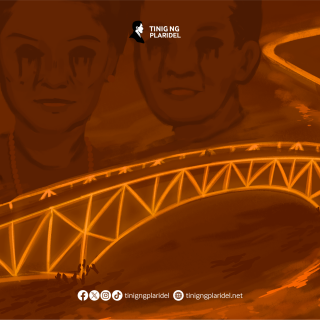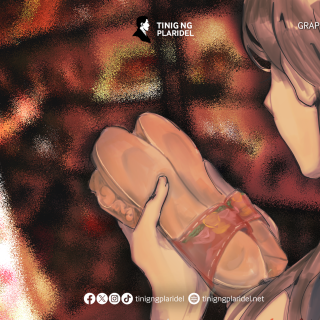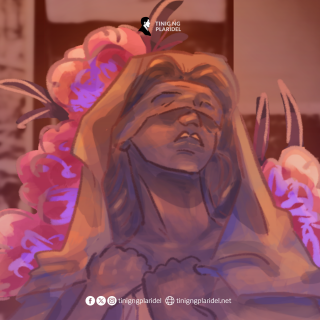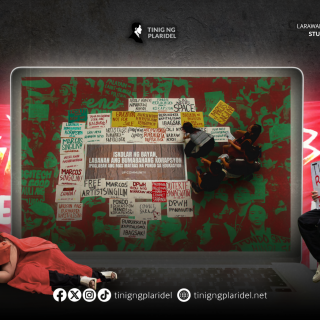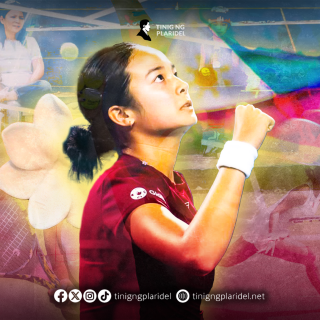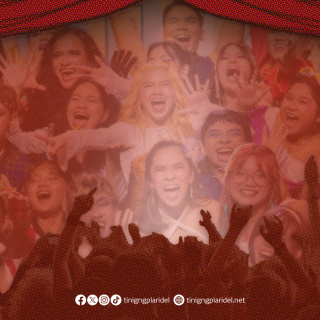When the weighing scale tipped to 110 kilograms, Kael Estrada, 26, had to face the heavy reality that she was reeling with the most severe case of obesity. Attributing her condition to her solitary stay in New Zealand, she decided to embrace a more active lifestyle.
To ease her worries, she invited her cousin for a four-kilometer run one morning in August last year. “I have already set my mind to start a physical activity. It was tiring, but I knew I would run again,” she said.
Estrada, belonging to Generation Z or those born from 1995 to 2009, is among the growing number of Filipinos who began their running journey recently. In 2023, physical exercise tracking application Strava recorded running as the platform’s “most uploaded sport”, with Generation Z setting the pace as the leading demographic.
With the activity gaining momentum among Filipinos, running coaches have observed a ‘boom’, or an increased interest in the sport. However, this is not the first time in the Philippines’ history.
The country first hit its stride in the running scene after the 1972 Munich Olympic Games where the United States of America won a gold medal. It rippled through the Philippine shores when the Gintong Alay sports program was launched in 1981 to develop track-and-field athletes.
Meanwhile, the second running boom emerged in the early 2000s, coinciding with a global participation increase in organized running events. An international study revealed a 300% rise in global running event participation from 1990 to 2013.
Health attitudes likewise shaped the perception and appreciation for running again when the pandemic hit in 2020. Most new runners were inspired to engage in the sport after government lockdowns forced Filipinos to live a sedentary lifestyle, coupled with health anxieties. This marked the third wave of the running boom.
As for Estrada, running became her escape during the pandemic from the confines of her concrete abode and the horrors of hypertension due to obesity. As of writing, she is proud to have lost more than 20 kilograms after three months.
Running captain Louise Sulit underscored physical fitness as an alternative to caring for one’s body in a healthcare system where medical treatments are expected to be more expensive.
“It’s cheaper to start doing any physical activities that can improve our health conditions,” he explained.
With this newfound appreciation for the sport, Sulit observed that different types of running—urban running, race running, trail running, obstacle course running, and even virtual running—have become popular among Filipinos post-pandemic.
Running communities
The influx of runners in the country can be linked to the emergence of new running communities, according to running captain Giap Losaria. These groups aim to develop the runners’ performance and attitudes toward healthy and active lifestyles, as they accommodate all fitness levels, like Run With Pat (RWP).
Established in 2021, the group has been providing a safe space to guide runners in their fitness journey, living by their motto, “Never run alone.”
For RWP captains Losaria and Sulit, instilling “safe spaces” in running communities meant fostering a sense of security and belongingness to the sport, regardless of one’s background.
“It’s telling people they can run whatever your shape, age, or your running pace is,” Losaria said.
RWP’s name was taken from running coach and TikTok personality Patrick Rubin, who started his influencer journey in Oct. 2021. He uploaded “run streak” videos where he does one-mile daily runs, and later invited other people to join him.
Rubin established RWP when casual run participation grew. As of 2024, it has chapters in the urban areas of Metro Manila, Laguna, Rizal, Baguio, Cebu, and Bacolod. Soon, they plan to build new chapters in La Union and Iloilo.
Running groups have training programs to help runners develop their overall endurance. RWP offers easy runs, speed training, and long slow distance (LSD) runs. What sets these apart is their distance and time to complete.
Captains decide the distance and the slowest pace their group will collectively run by for easy runs. This inspired RWP’s motto as they “try to start together and end altogether,” Sulit explained.
Pace groups were also formed to accommodate the runners’ different pace levels, and are implemented for speed training and LSD runs.
In speed training, runners repeatedly sprint short distances at their critical velocity, or their maximum speed possible. A 30-minute integrated bodyweight workout precedes this to enhance performance.
LSD runs, on the other hand, take a slower pace than easy runs but cover more than 15 kilometers. Usually done in an urban setting, Sulit estimates that these runs take four hours at the maximum.
Some programs also tailor their training to the racing events that most of their members attend. Reconnaissance runs are held to familiarize runners with the races’ routes.
Recent marathon completer Eloise Cadilo, 25, trained for the 42-kilometer Hanoi Marathon with the help of her community. Her discipline developed by following weekly training blocks, which included a running program and strengthening workouts given by her coach.
However, Losaria explained that communities are not limited to providing activities other than running and workouts. They also conduct first aid training and mental health seminars.
“We do talks, mini-seminars on different topics [related to] running like nutrition, gears and injury prevention. It’s part of the discussions, [even] sometimes informal,” he added.
Network-building happens within the running community, too. Whether it is a business to promote, friends to invite for birthdays or potential love interests, these groups go beyond running.
Cost of running
While running might seem an accessible sport for many, several factors shape one’s commitment to it–such as building gear and apparel, investing in nutrition, and joining race events.
Runners consider their shoes as the most important gear, and hence, the most expensive investment.
“I’ve learned the hard way that if your shoes are not good for running, you are prone to injury. It’s more expensive to do physical therapy [sessions] and rehabilitations,” Cadilo said.
Alvin Panal, 30, also explained the additional cost of customizing shoes to cater to his flatfoot or the lack of arch in the feet. He needed his shoes to have a platform that could distribute his body weight to his feet.
“I couldn’t walk for two days after running 10 km because my knees and hips hurt so bad,” Panal shared.
A pair of running shoes designed to handle higher impact when landing would cost around P8,000 to P10,000.
Some shoes have carbon plates that help the runner bounce during running. Studies say that it increases speed by 2%. However, it is recommended to run in these shoes for up to only 300 kilometers because of the foam’s eventual weariness.
Cadilo added that it is important for runners to have other pairs of running shoes to train the foot structure and adapt it to different shoe materials, composition, and structure.
Aside from the gears, race event participation is also part of a runner’s expenditures. The usual price for joining these races ranges from P1,500 to P2,000, depending on the distance. For longer and more intense running events like 42-kilometer marathons, it could cost up to P4,800.
Fees usually include the singlet or the event shirt, medal, and the actual running experience. But after participating in an international race, Cadilo criticizes how patronized these runs are.
Cadilo said the Philippines needs improvement in terms of the organizing process, aid stations, and other race inclusions.
“The race bib claiming is organized [in international race events]. The aid stations are very generous and are placed strategically for runners every two to three kilometers. That should be the practice,” Cadilo said.
For commercial running events, sponsored products from corporate partnerships compensate for these woes. Women’s Run PH founder Nicole de la Cruz shared that aside from the race, runners seem to enjoy ”when they receive something more from the event.”
Running became a rising market in the country, generating a total revenue of $10.3 million (P602.48 million) in 2024.
Despite these costs, runners like Estrada said her investments in this newly found lifestyle set her mind to commit in the long run. She jested that a “return on investment” must follow.
Accessibility for sustainability
While Losaria believes that running can be democratized further, he said that running communities could not do this alone, calling for the government and other organizations to complement their efforts.
One of the steps that could help in popularizing running is local initiatives like car-free weekends, Sulit added.
This is notable among central business districts like parts of Makati, Ortigas, and Taguig. Recently, the Quezon City local government implemented an ordinance for a car-free Tomas Morato every first Sunday of the month from 5 a.m. to 10 a.m.
While there are government policies promoting an active healthy lifestyle among Filipinos, researchers from the University of the Philippines evaluated that it is not a conclusive indicator of improving physical activity engagement.
De la Cruz also said she founded Women’s Run PH because of the low participation rate of women in racing events due to self-doubts and perceived competition, among others.
“They feel like you need to be competitive to be able to join. Others feel they are not safe. They have a lot of worries,” she added.
Local roads are not safe for running, especially for women. Having already experienced being catcalled while running, female runners Cadilo and Estrada avoid running alone, especially at night.
“I don’t run in unfamiliar places because it doesn’t seem safe. Not all roads are friendly for runners because who knows if I would be catcalled or bumped by a car?” said Estrada.
Generally, the road situation in the Philippines needs improvement. For roads mainly built for motorized vehicles, pedestrian accidents remain a threat, especially in the metro.
Cadilo said she almost got hit by a motorcycle twice despite running counterflow. Some runners adopted a defensive approach, as trained in their running communities.
Spatial familiarity also helps establish safety, so some runners pass by their usual routes.
Amid these challenges runners face, Losaria and Sulit are optimistic that running could be sustainable because the sports scene is growing to be more inclusive. They also envision running as the seed for a wider health movement.
“Hopefully this running boom lasts and it quickly transfers to the next generations. [But] it won’t be sustained if the community is not dynamic. It has to be inclusive, scientific, and pro-people,” said Losaria.
EDITOR’S NOTE: The original version of this article was submitted for a J197 class under Asst. Prof. Adelle Chua



